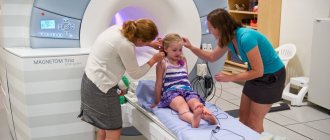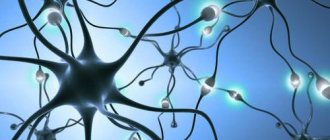How does emotional memory work?
The work is based on the interaction of several structural elements: emotions themselves, positive or negative, feelings, thoughts and information that stimulates the individual’s thoughts and feelings. They are closely interconnected and it is impossible to separate the components in the stream of consciousness. How do you remember emotions?
An experienced situation or phenomenon leaves a trace in the psyche called an engram. Emotions help us determine how successful our relationships with society are and whether our personal relationships are successful. The stronger the emotion, the brighter and clearer the engram. Then a sudden reminder can awaken this trace in memory and “pull out” all the emotions.
In the process of memorization, generalization of experiences often occurs. This means that the stimulus that caused the experience is eventually combined with other stimuli. Because of this, a person sometimes cannot clearly remember the real reason for his fear.
Components of Success
Studying many methods and even the entire methodology for improving memory does not always bring the desired effect, since it is important to take into account factors that negatively affect intelligence. The conditions for the development of ideal memory are as follows:
The conditions for the development of ideal memory are as follows:
Providing the brain with sufficient oxygen. Quitting smoking and alcohol, especially when you need to learn something. Full sleep. Proper nutrition - cheese, eggs, almonds, and nuts help with thought processes. Protein-rich and easily digestible foods are a prerequisite for fruitful mental efforts.
It is important to maintain a balance between hunger and a too full stomach.
As you can see, methods for developing memory are varied, but they all involve the active use of thinking, and the result can be obtained by repeating training exercises many times and following the rules of a healthy lifestyle.
Life, memory and emotions
Any memory is emotionally colored: joy, sadness, pride or contempt. Emotionally neutral events are not recorded and do not influence the formation of personality. Emotions “supervise” the deepest essence of a person.
This is a magnifying glass with which we examine the smallest details of events and remember them.
Every woman remembers how her first child was born, what color his first rompers and boots were. Every person remembers how he received his first school diploma, teachers, school principal, classmates.
Such events are stored in the heart because they are part of our daily existence. The mind relies on these pictures to create our image, our vision of ourselves. Positively colored events remain with us forever. This helps you make the right life choices and promotes personal growth.
Characteristic
Emotional memory helps to retain in a person’s mind everything that he experienced in a certain situation. Subsequently, this information becomes a signal to repeat what has been done again, if the emotions experienced from this action in the past were positive, or will stop us from performing this or that action or deed, if doing the same thing before, we experienced a negative one.
Pavel Petrovich Bolonsky, an outstanding teacher and philosopher of the last century, while studying psychology, came to the conclusion that a person perceives events that happen here and now much more clearly. But still, having found himself in a situation similar to what happened earlier, he immediately receives a signal from the past, which forces him to stop or, conversely, to continue doing what he started following the examples of the past. At the same time, the brain archives feelings such as surprise, suffering, and fear especially clearly. Moreover, this applies not only to people, but also to animals.
Emotional and figurative types of memory
Human emotional memory is closely interconnected with images. Due to the fact that emotions brighten experienced events and captured patterns, our brain is able to produce new images that did not exist. That is, to create art and poetry.
Images can be visual, olfactory and even gustatory. Emotional images are best remembered by actors and poets. It is for these people that emotional memory is always leading. And just like in any other profession, you need to be able to manage images.
Definition
Emotional memory – remembering, preserving and reproducing emotionally charged phenomena, memory for feelings.
It is acquired as a result of experienced sensations, both positive and negative, which are associated with events that occurred in the past. In the present, these memories, stored in emotional memory, can serve as a guide to a person's actions and interpretation of events. This is what explains the reluctance to buy any product in a store if the last time you found it not fresh enough, cloying or too sweet. Children's fears fuel their dislike of going to the dentist. A more dramatic example is that after experiencing a difficult breakup, a person becomes less amorous and trusting, closed.
But while emotional memory is important to most people as a means of recalling memories and as a learning experience, for an actor it is much more important
It is important for a stage performer to be able to isolate a pure emotion or experience in a memory, and “live” it – convey it during the stage action. Therefore, he needs a strong, stable and rich emotional memory
One of the first to become interested in this subject was the French psychologist T. Ribot, who studied the psychology of feelings and used the term “affective memory.” K. S. Stanislavsky, referring to the obsolescence of this concept, in “The Actor’s Work on Oneself,” uses the concept of “emotional memory.”
Exercise to develop verbal memory
In order for this type of memory to better develop in a child, you need to help him “turn on” more often imaginative thinking, take him to interesting places and accustom him to the world of literature and theater from childhood.
In adults, one type of memory already dominates, and the psyche is aimed at a certain type of activity. It is very difficult for a mature adult to change perceptions and start thinking differently. However, everyone has emotional memory, and you can try to develop it better and bring it to a conscious level.
What tasks need to be performed to develop this type of memory? Emotional memory is trained if every day, while reading a book, you write down on paper the emotions that arise from the actions of one or another character in your favorite book. Then try to analyze the hero’s inner world, conflict situations between him and society. You can also choose a film for such an analysis.
Emotional intelligence is the ability to understand and control emotions. Without developing emotional intelligence, it is impossible to successfully lead a team. This is an important quality of true leaders.
A person with developed emotional intelligence is easy to recognize. He gets along well with the people around him, as he understands both his own and other people's emotions. He is always friendly and cheerful.
Adults should learn:
- Awareness of one’s own emotions, the ability to name them.
Four main types of emotions:- joy;
sadness;
- fear;
- anger.
- Learn to control your behavior, observe yourself, listen to yourself, understand your reaction to a difficult situation, a difficult person.
- Learn empathy - understanding the psychological state of another person: a family member, friend, colleague. Learn to see how they react to your words and behavior.
- Learn to express emotions.
They manifest themselves differently in different people; their actual palette is wider.
Dominance of involuntary memory in childhood
Basic memory processes Read more: Formation of arbitrary memory
2.2. Dominance of involuntary memory in childhood
Memory in preschool age, according to V.S. Mukhina, is predominantly involuntary in nature. This means that the child most often does not set conscious goals for himself to remember anything. Memorization and recollection occur independently of his will and consciousness. They are carried out in activity and depend on its nature. The child remembers what his attention was directed to in the activity, what made an impression on him, what was interesting.
The quality of involuntary memorization of objects, pictures, words depends on how actively the child acts in relation to them, to what extent their detailed perception, reflection, and grouping occur in the process of action. Thus, when simply memorizing pictures, a child remembers much worse than in those cases when he is asked to arrange these pictures in their places, for example, putting aside separate images for the garden, kitchen, children's room, yard. Involuntary memorization is an indirect, additional result of the child’s actions of perception and thinking.
In younger preschoolers, involuntary memorization and involuntary reproduction are the only form of memory work. The child cannot yet set himself the goal of remembering or remembering something, and certainly does not use special techniques for this.
When three-year-old children were presented with a series of pictures and asked to look at them and another series with a request to remember, the vast majority of children behaved exactly the same. Having cast a quick glance at the picture, the child immediately took it aside and asked the adult to show another picture. Some children tried to reason about the objects depicted and recalled incidents from past experience associated with the pictures. “Glasses—here they put them on the eyes”; “This is a butterfly, called a worm”; "Watermelon. My mom and dad and I bought a large watermelon and small plums.” However, no actions to remember were observed in the children (based on materials from V.S. Mukhina).
2.3. Development of involuntary memory
According to R.S. Nemov, in children of early preschool age, involuntary, visual-emotional memory dominates. This means that the child most often does not set conscious goals for himself to remember anything. Memorization and recollection occur independently of his will and consciousness. They are carried out in activity and depend on its nature. The child remembers what his attention was directed to in the activity, what made an impression on him, what was interesting.
Involuntary memorization, associated with the active mental work of children on certain material, remains much more productive until the end of preschool age than voluntary memorization of the same material. At the same time, involuntary memorization, which is not associated with the performance of sufficiently active actions of perception and thinking, for example, memorizing the pictures in question, turns out to be less successful than voluntary. Involuntary memorization in preschool age can be strong and accurate. If the events of this time had emotional significance and made an impression on the child, they can remain in memory for the rest of their lives. Preschool age is a period freed from the amnesia of infancy and early childhood.
The first recollection of impressions received in early childhood usually occurs at the age of about three years (this refers to the memories of adults associated with childhood). It has been found that almost 75% of childhood first memories occur between the ages of three and four years. This means that by this age, i.e. By the beginning of early preschool childhood, the child’s long-term memory and its basic mechanisms are connected. One of them is the associative connection of the memorized material with emotional experiences. The imprinting role of emotions in long-term memory begins to manifest itself already at the beginning of preschool age.
Most normally developing children of primary and secondary preschool age have well-developed immediate and mechanical memory.[17] They remember relatively easily and reproduce what they saw and heard without much effort, but only if it aroused their interest, and the children themselves were interested in remembering or remembering something. Thanks to such memory, preschoolers quickly improve their speech, learn to use household items, orient themselves well in their surroundings, and recognize what they see or hear. In some cases, linguistically or musically gifted children also have well-developed auditory memory.
Some preschool children have a special type of visual memory, which is called eidetic memory. The images of eidetic memory in their brightness and clarity are close to the images of perception. After a single perception of the material and very little mental processing, the child continues to “see” the material and perfectly reconstructs it. Even after a long time, remembering something perceived before, the child seems to see it again and can describe it in detail. Eidetic memory is an age-related phenomenon. Children who have it in preschool age usually lose this ability during school. In fact, this type of memory is not so rare, and is present in many children, but often disappears in adults: due to insufficient exercise of this type of memory. This type of memory can be developed by: artists, musicians. Each person develops the most those types of memory that he uses most often.[18]
3. Stages of mastering arbitrary forms of memory
1. Transition from involuntary to voluntary memorization
2. Favorable conditions for mastering voluntary memorization
3. Stages of mastering arbitrary forms of memory
3.1. Correlation between involuntary and voluntary memorization
Memory development in preschool age is characterized by R.S. Nemov’s gradual transition from involuntary and immediate to voluntary and mediated memorization and recollection. By the end of preschool age, involuntary memory remains the dominant type of memory. The quality of involuntary memorization of objects, pictures, words depends on how actively the child acts in relation to them, to what extent their detailed perception, reflection, and grouping occur in the process of action. Thus, when simply memorizing pictures, the child remembers much worse than in those cases when he is asked to arrange these pictures in their places, for example, to set aside separate images for the garden, kitchen, children's room, yard. In older preschool age, there is a gradual transition from involuntary to voluntary memorization and reproduction of material. At the same time, in the corresponding processes, special perceptual actions are identified and begin to develop relatively independently, mediating mnemonic processes and aimed at better remembering, more fully and more accurately reproducing the material retained in memory.[19]
Despite significant achievements in mastering voluntary memorization, children turn to voluntary memorization and reproduction in relatively rare cases, when corresponding tasks arise in their activities or when adults demand it.
Children's memory productivity in the game is much higher than outside the game. However, the youngest children, three-year-olds, have relatively low memory productivity even in play. The first special perceptual actions aimed at consciously remembering or remembering something are clearly visible in the activities of a 5-6 year old child, and simple repetition is most often used. The transition from involuntary to voluntary memory includes two stages. At the first stage, the necessary motivation is formed, i.e. the desire to remember or remember something. At the second stage, the mnemonic actions and operations necessary for this arise and are improved. By the end of preschool age, the process of voluntary memorization can be considered formed. Its internal, psychological sign is the child’s desire to discover and use logical connections in the material for memorization.
It is believed that with age, the speed at which information is retrieved from long-term memory and transferred to working memory, as well as the volume and duration of working memory, increases. It has been established that a three-year-old child can operate with only one unit of information currently located in RAM, and a fifteen-year-old child can operate with seven such units.
In one experiment, children aged 3 to 8 years old were shown 10 different pieces of wood laid out in one row along their length, and were asked to simply look at this row. A week, and then a month later, they were asked to lay out this series from memory.
The first interesting result of the experiment was the following. Within a week, the younger preschoolers could not remember the sequence of the bars, but nevertheless they could restore it, choosing one of the following options for the arrangement of the row: a) choosing several equal bars; b) selection of long and short bars; c) making groups of short, medium and long bars; d) reproduction of a logically correct, but too short sequence; e) compiling a complete initial ordered series. The next result was that after six months without any new presentations of memorized material, the children’s memory spontaneously improved in 75% of cases. Those children who were at level (a) moved on to constructing a series of type (b). Many moved from level (b) to (c) or even (d). From level (c) children moved to the next, etc. (based on materials from Z.M. Istomina).
With the help of mechanical repetitions of information, children of older preschool age can remember it. They show the first signs of semantic memorization. With active mental work, children remember material better than without such work.
Memory stores ideas, which in psychology are interpreted as a generalized memory. The transition to thinking from a visually perceived situation to general ideas is the child’s first separation from purely visual thinking.[20] Thus, a general idea is characterized by the fact that it is capable of “snatching the object of thought from the specific temporal and spatial situation in which it is included, and, therefore, can establish between general ideas a connection of such an order that has not yet been given in the child’s experience” .[21] The memory of a preschooler, despite its apparent external imperfection, actually becomes the leading function, occupying a central place.
Basic memory processes Read more: Formation of arbitrary memory
Information about the work “Development of memory of preschool children”
Section: Psychology Number of characters with spaces: 57111 Number of tables: 4 Number of images: 0
Similar works
Memory development in preschool children
84629
7
10
... contributing to the understanding of the material, a large place is occupied by questions that direct children’s attention to the main thing; methodological tasks, what is shown in the picture, etc. 1.2. Theoretical approaches to the development of memory in preschool children in Soviet psychology. From the moment of birth, a child interacts with the people around him. In communication with adults, all his…
Development of memory in children of early preschool age
60506
1
0
… . 3. The capabilities of natural memory are manifested to the greatest extent in preschool age. Early childhood is characterized by sensitivity to memory development: in early preschool age, memory is faster than other abilities in terms of development. 4. For children of primary school age, it is especially important to use such methods of psychological influence that contribute to its activation and...
Features of memory development in children with hearing impairments
47063
3
3
..., based on the establishment of meaningful connections between parts of the memorized material and between the memorized material and elements of past experience stored in memory. 1.3 Features of memory development in children with hearing impairment Research by domestic defectologists and psychiatrists (R.M. Boskis, T.A. Vlasova, M.S. Pevzner, V.F. Matveev, L.M. Bardenshtein, etc.) indicate that...
Memory development in preschool age
62048
0
0
... with recognition, reproduction is also formed, first involuntary, caused by a question, a prompt from an adult, a similar object or situation, and then voluntary. [14, p. 98] The development of memory in preschool age is also characterized by a gradual transition from involuntary and immediate to voluntary and indirect memorization and recollection. Z.M. Istomina analyzed how...
How are works of art created? The role of emotional memory
Konstantin Sergeevich Stanislavsky created a system for teaching acting, based on the latest discoveries in the field of the subconscious and affective memory. Stanislavski's method teaches understanding of the deep organic essence of a character.
The richer and deeper the artist’s emotional memory, the deeper and more varied the source of his creative inspiration. An actor's creativity depends on the power, sharpness, and accuracy of his emotional memory.
People of creative professions are good at using images. They need to be able to analyze and synthesize images, make analogies and produce new ideas. Without constant attention to these mental processes; to the accumulated emotional experience, the images will be blurry. Accordingly, the actor will not be able to reproduce them clearly enough on stage.
The ability to select a chain of similar images for each image is important. All great geniuses were able to keep in memory many such chains of emotional images, which they then embodied in music or drawing. This can be learned. Another important characteristic of the emotional memory of a creative person is a low threshold of sensitivity. The lower the threshold of emotional sensitivity, the more information about the world and other people a creative person can perceive and embody.
Physiological basis of memory
The existence of emotions was confirmed by science when an area called the amygdala was discovered deep in the temporal lobe of the brain. This part of the limbic system is responsible for the emergence of emotions. But vegetative changes in the body under the influence of fear, for example, are the work of the hypothalamus. The processes occurring in the limbic system are both electrical and biochemical in nature; they affect the condition of all organs and systems.
Emotions are therefore always accompanied by activation of the nervous system and changes in blood pressure.
Thanks to the work of the limbic system, a living organism develops using motivation. Behavior is unconsciously either directed to where the person receives reinforcement in the form of positive emotions, or blocked when faced with fear or pain.
All strong emotions are consolidated in memory through the formation of synaptic connections. Various parts of the brain take part in the formation of a memory imprint:
- cerebral cortex: parietal, temporal and frontal;
- the cerebellum is responsible for remembering body movements;
- hippocampus;
- subcortical nodes.
Connections between neurons are not established immediately. The work of chemicals such as endorphins, calcium and enkephalins is important here. These substances are neurotransmitters - hormones that transmit impulses between neurons.
The memorization process requires energy and proteins. Therefore, for a good memory it is necessary to eat well.
Functions of emotional memory
Why does someone who is not creative need such a memory? The development of emotional memory is necessary for everyone, because a person without emotional experience is uninteresting in communication. In addition, such people are not able to empathize, share painful things and, in essence, are very lonely in their lives. So, we can highlight several functions:
- promotes personality development;
- forms emotional intelligence;
- helps to better navigate society, so it is needed by teachers and company directors;
- influences the development of creativity.
Conclusion
All behavior throughout life is built on the basis of the emotional experience of the individual. The basis for dividing memory into motor and emotional is the mental activity that is more often used by the individual.
The entire limbic system is responsible for maintaining and developing the emotional state. It includes: the amygdala (amygdala), hypothalamus, mastoid body, hippocampus, olfactory triangle, and other structures. Memory is formed through the synthesis of long-term connections between brain neurons.
The ability to create is, first of all, a developed figurative and emotional memory. The development of figurative memory is necessary for those who decide to devote themselves to literary, musical or acting creative activity.












